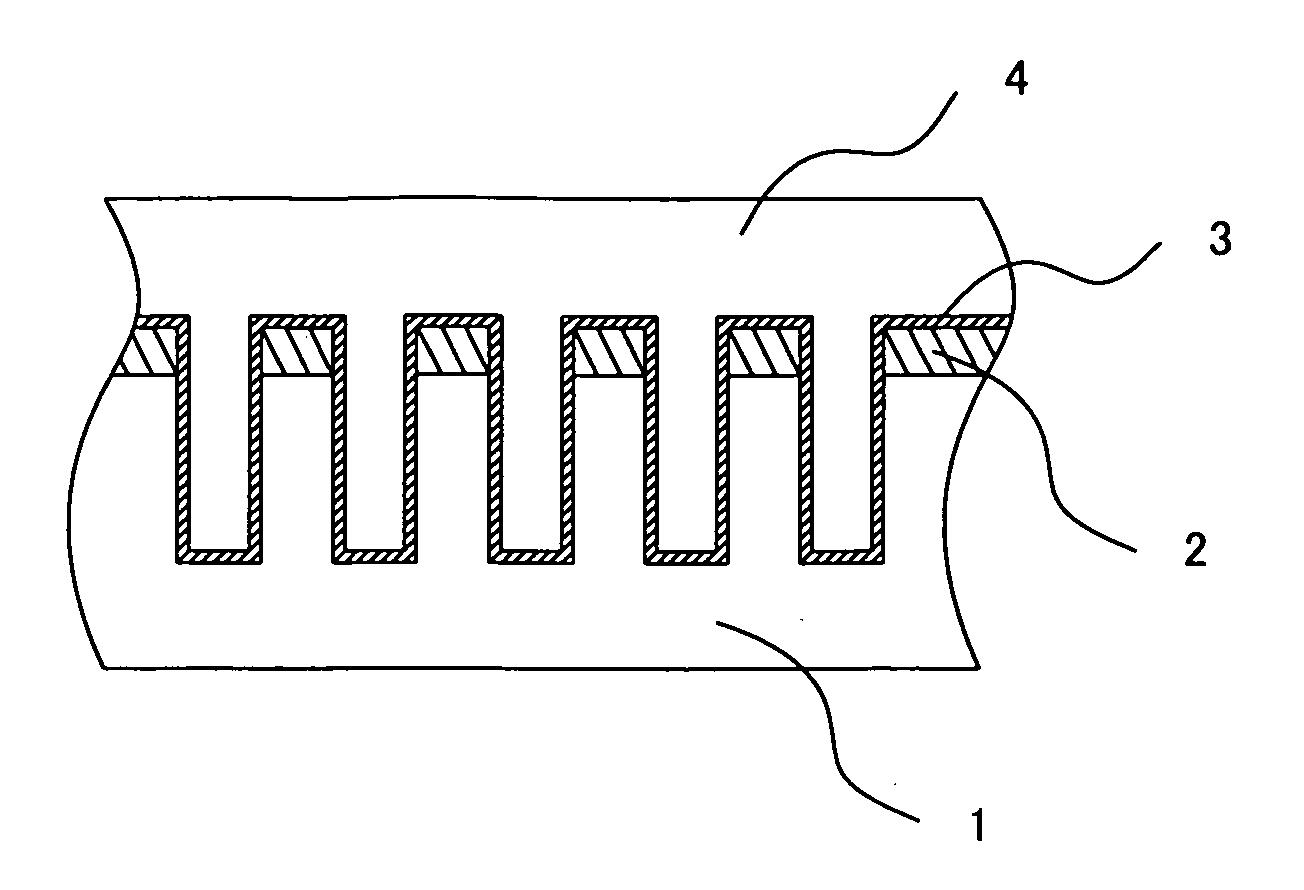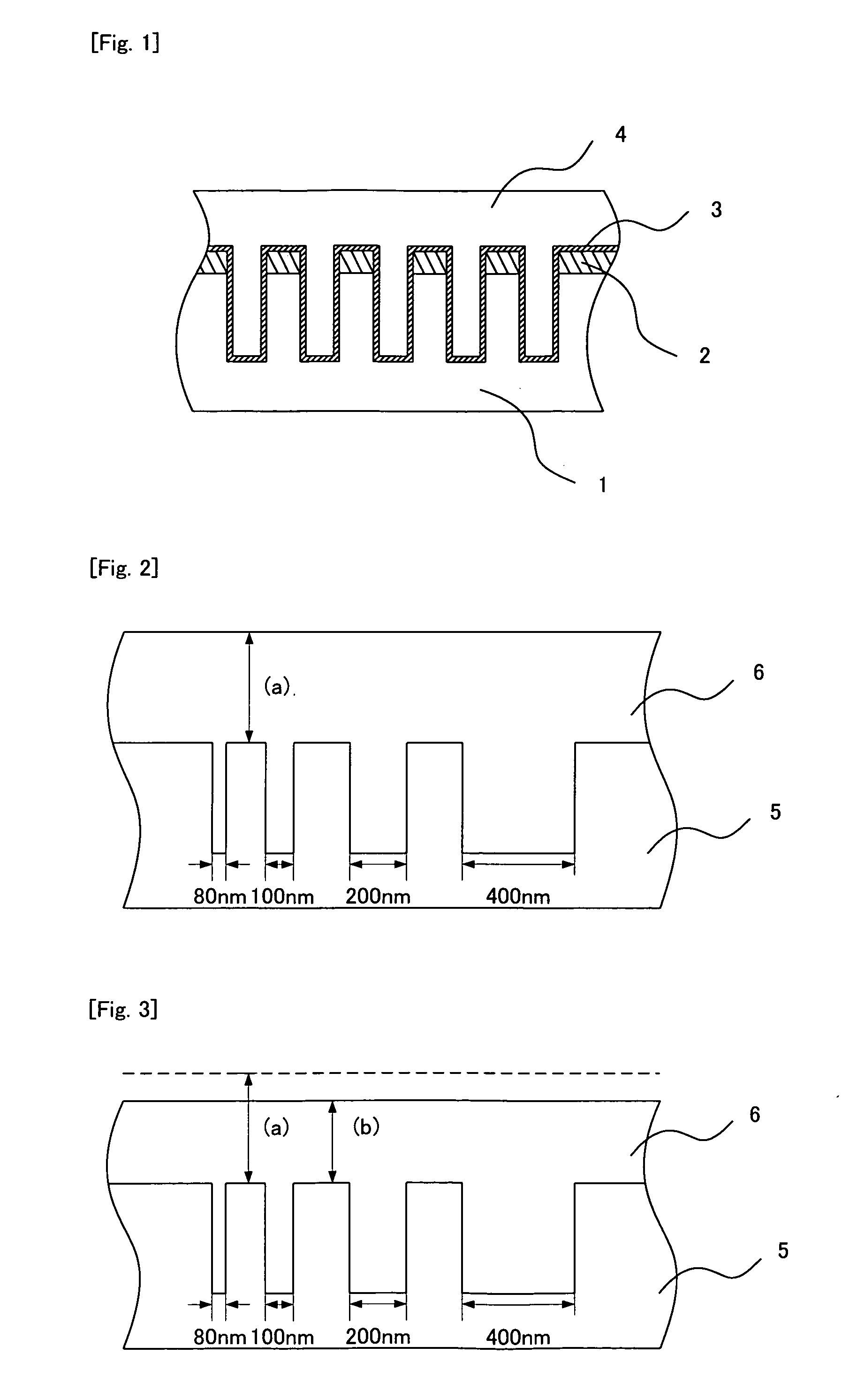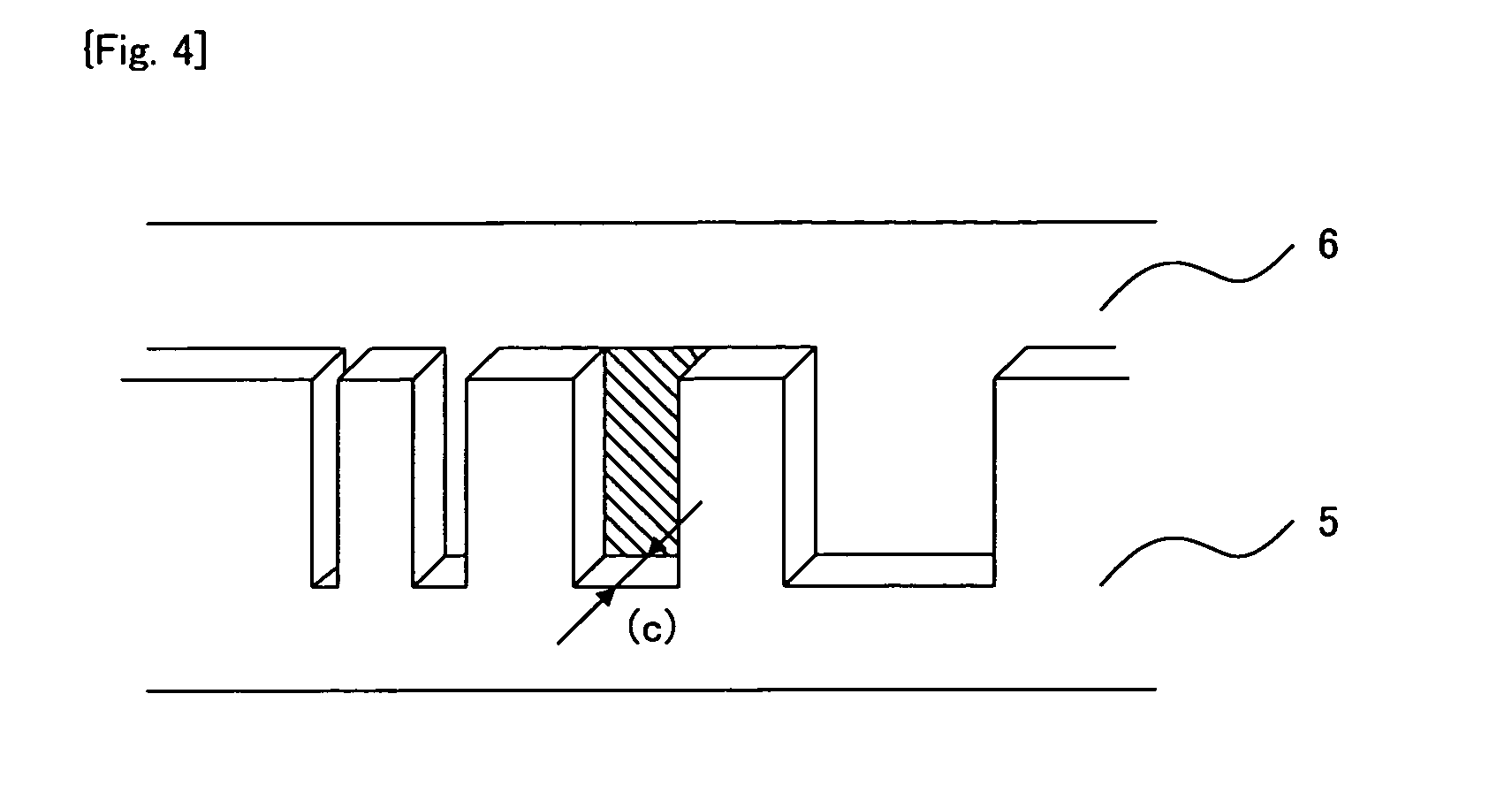Process for Producing Siliceous Film and Substrate With The Siliceous Film Produced by The Process
a technology of process and siliceous film, which is applied in the direction of coatings, chemical vapor deposition coatings, semiconductor devices, etc., can solve the problems of difficult formation of fine isolation structures suitable for a necessary level of integration, voids formed in grooves, and deterioration of physical strength and insulating properties of the substrate, etc., to achieve excellent mechanical strength, no deterioration in properties, and even etching rate
- Summary
- Abstract
- Description
- Claims
- Application Information
AI Technical Summary
Benefits of technology
Problems solved by technology
Method used
Image
Examples
example 1
[0078]The present invention will be further described with reference to the following Example which illustrate a contemplated technique for embedding element isolation grooves of STI (shallow trench isolation) structures in conjunction with FIG. 1.
[0079]A grooved sample for the evaluation of a construction as shown in FIG. 1 was first provided. This grooved sample has been formed by depositing a silicon nitride (SiN) film 2 on an upper surface of a silicon substrate 1, for example, to a thickness of 150 nm and then forming grooves by lithography and dry etching (five grooves are shown in the drawing). In this case, for all the five grooves, the width was, for example, 80 nm to 400 nm, and the depth was, for example, 450 nm (the depth of the silicon substrate part was 300 nm).
[0080]A 20 nm-thick silicon dioxide film 3 was deposited on the grooved sample having the above construction by plasma chemical vapor deposition (plasma TEOS) using TEOS as a silicon source.
[0081]The silicon dio...
example 2
[0087]A sample was prepared in the same manner as in Example 1, except that a 20 nm-thick silicon nitride film was deposited instead of the plasma TEOS film shown in FIG. 1 by plasma chemical vapor deposition (PE-CVD). The silicon nitride film 3 was formed by the above PE-CVD under the following film forming conditions. SiH4 / NH3 gas flow rate and source power / bias power: SiH4 / NH3=55 / 110 sccm, SRF / BRF=4400 / 2600 W, and substrate temperature=400° C.
[0088]SIMS analysis and TDS measurement have revealed that the plasma PE-CVD film contained an excessive amount of hydrogen. Specifically, according to the SIMS analysis, the content of hydrogen in the film was about 1×1021 atms / cm3, and, according to the TDS analysis, it was confirmed that hydrogen was released from the film in vacuo at a temperature around 350° C., indicating that this film contained hydrogen.
[0089]The film formation using the polysilazane solution and the heat treatment were carried out in the same manner as in Example 1....
example 3
[0097]A sample was prepared in the same manner as in Example 1, except that a 20 nm-thick silicon dioxide film was deposited instead of the plasma TEOS film shown in Example 1 by plasma chemical vapor deposition using SiH4 and O2 as a source.
[0098]The silicon dioxide film 3 was formed under the following film forming conditions. SiH4 / O2 gas flow rate and source power / bias power: SiH4 / O2=50 / 100 sccm, SRF / BRF=4500 / 3000 W, and substrate temperature=250° C.
[0099]SIMS analysis and TDS measurement have revealed that the silicon dioxide film contained an excessive amount of hydrogen. Specifically, according to the SIMS analysis, the content of hydrogen in the film was about 1.5×1021 atms / cm3.
[0100]The film formation using the polysilazane solution and the heat treatment were carried out in the same manner as in Example 1.
PUM
| Property | Measurement | Unit |
|---|---|---|
| thickness | aaaaa | aaaaa |
| size | aaaaa | aaaaa |
| thickness | aaaaa | aaaaa |
Abstract
Description
Claims
Application Information
 Login to View More
Login to View More - R&D
- Intellectual Property
- Life Sciences
- Materials
- Tech Scout
- Unparalleled Data Quality
- Higher Quality Content
- 60% Fewer Hallucinations
Browse by: Latest US Patents, China's latest patents, Technical Efficacy Thesaurus, Application Domain, Technology Topic, Popular Technical Reports.
© 2025 PatSnap. All rights reserved.Legal|Privacy policy|Modern Slavery Act Transparency Statement|Sitemap|About US| Contact US: help@patsnap.com



